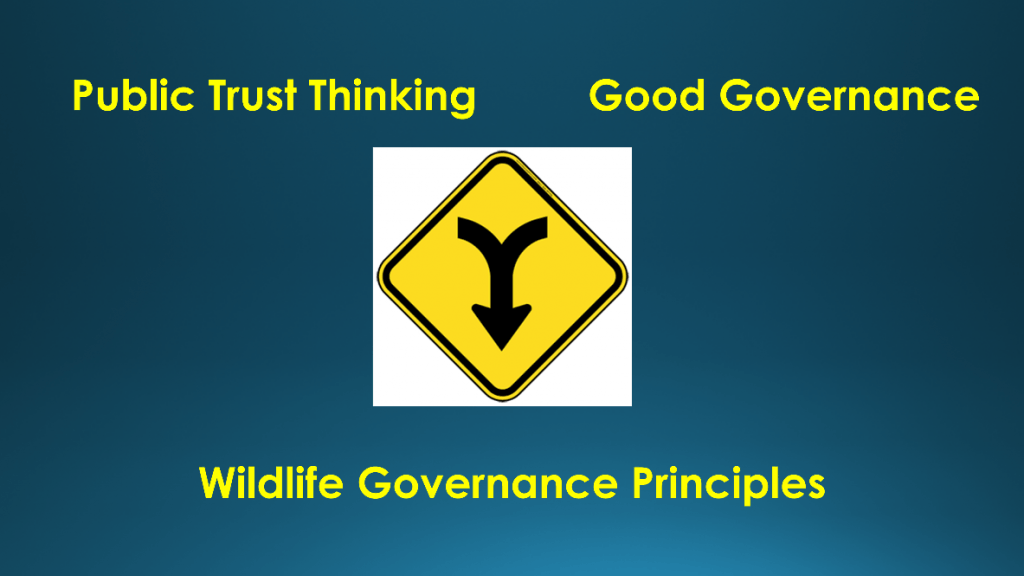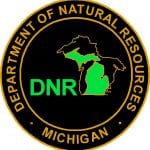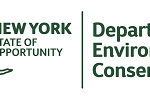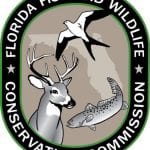Brief Overview
Watch this 10 minute excerpt from a webinar by Ann Forstchen that covers Agency Change, the Wildlife Governance Principles, the Public Trust Doctrine, Public Trust Thinking, and Governance.
Public Trust Doctrine
The Public Trust Doctrine are the elements of public trust thinking that are formally incorporated into the legal framework of a given jurisdiction. It is primarily associated with common law traditions. Hare and Blossey (2014: 397) define public trust thinking as an “orientation towards natural resource governance that uses concepts of trusteeship to frame human responsibilities to conserve natural resources” for the benefit of current and future citizens without privileging any particular individuals or groups.
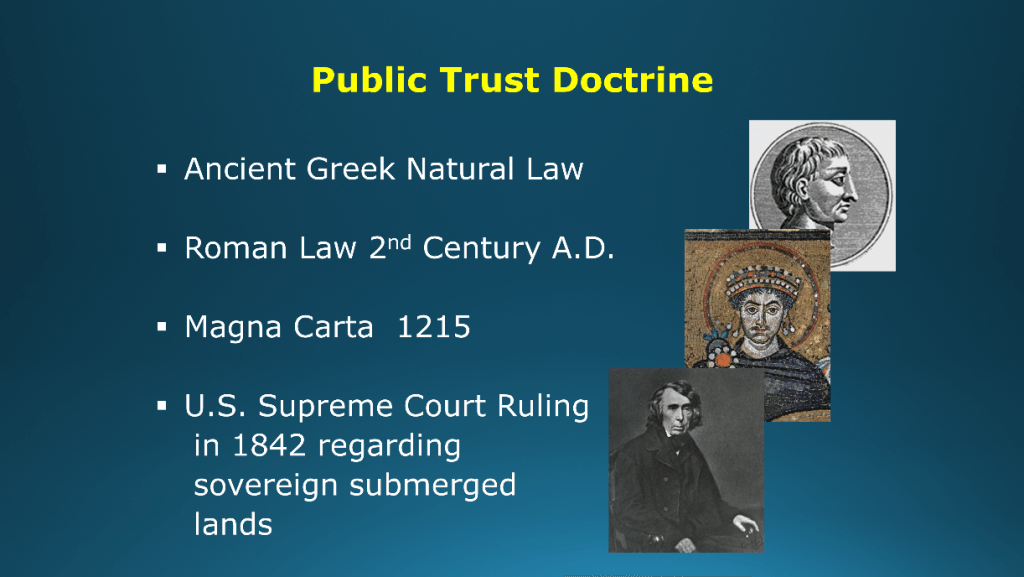
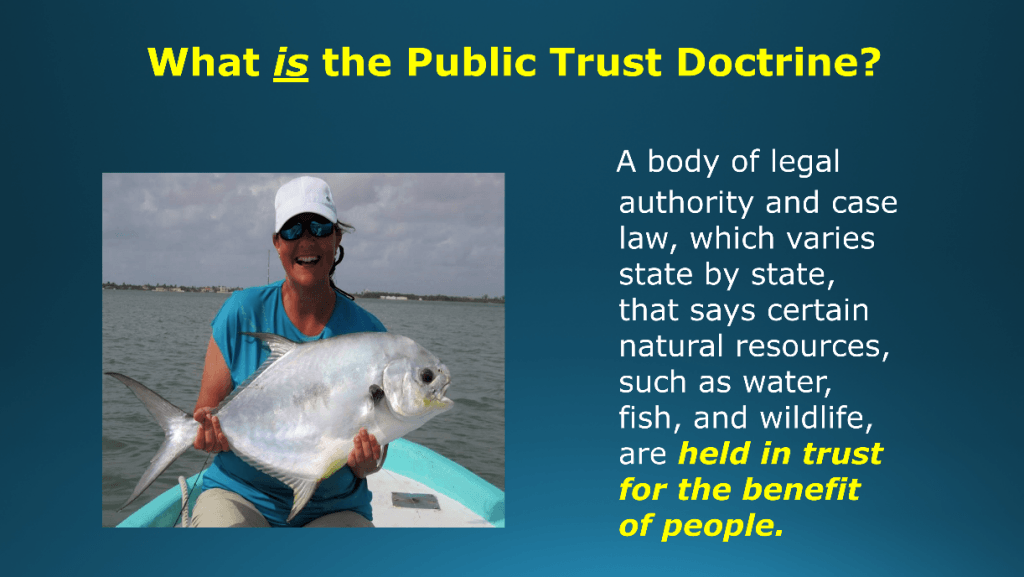
Public Trust Thinking
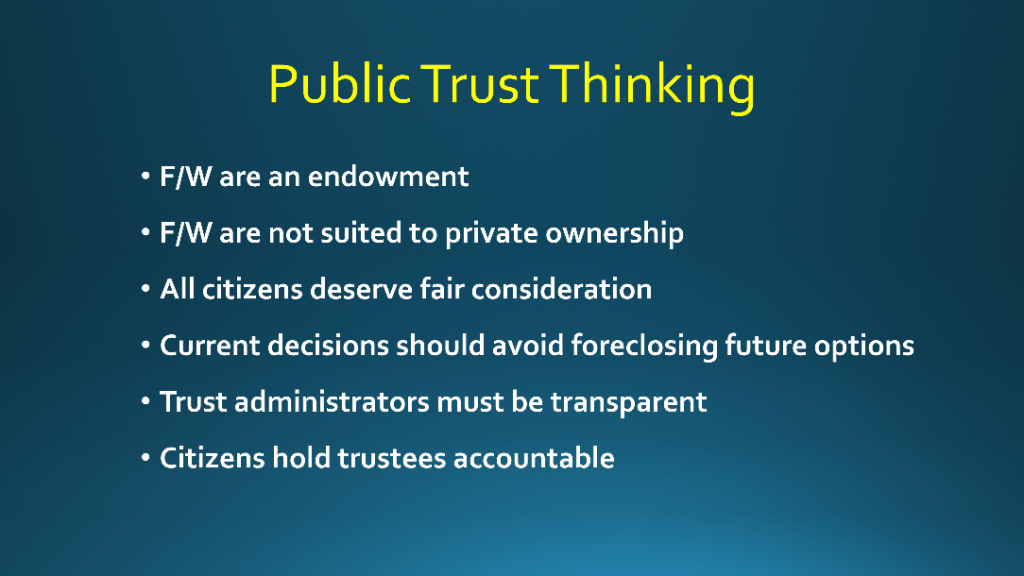
Public trust thinking is an ancient philosophy that applies concepts of trusteeship to the use and management of natural resources. It also serves as the basis of the legal Public Trust Doctrine — the source of state agencies’ authority and responsibility for conserving fish and wildlife for the benefit of current and future generations.
Public trust thinking refers to the ideas that fish and wildlife are an endowment to be stewarded for current and future generations and fish and wildlife are not suited to exclusive private ownership. All citizens deserve fair consideration in allocation of public benefits and current decisions should avoid foreclosing future options. Trust administrators must be transparent and citizens are entitled and obligated to hold trustees accountable.
Here is another way to visualize how the Public Trust Doctrine and Public Trust Thinking are related:

Good Governance
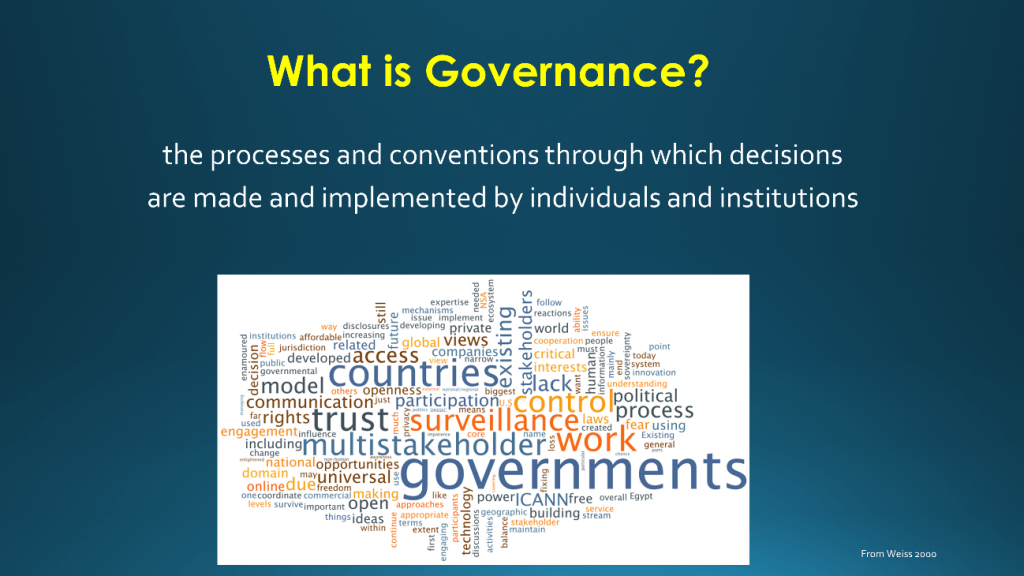 While PTT has ancient origins other valuable and contemporary ideas about good governance can be combined with PTT to help meet the expectations wildlife managers are currently facing to achieve lasting conservation outcomes. In the U.S. (and many other jurisdictions), good governance embodies a wide range of practices and beliefs that reflect fair and considerate public decision-making processes and application of policy tools. These practices and beliefs guide actions, decisions, and conduct of public and private institutions.
While PTT has ancient origins other valuable and contemporary ideas about good governance can be combined with PTT to help meet the expectations wildlife managers are currently facing to achieve lasting conservation outcomes. In the U.S. (and many other jurisdictions), good governance embodies a wide range of practices and beliefs that reflect fair and considerate public decision-making processes and application of policy tools. These practices and beliefs guide actions, decisions, and conduct of public and private institutions.
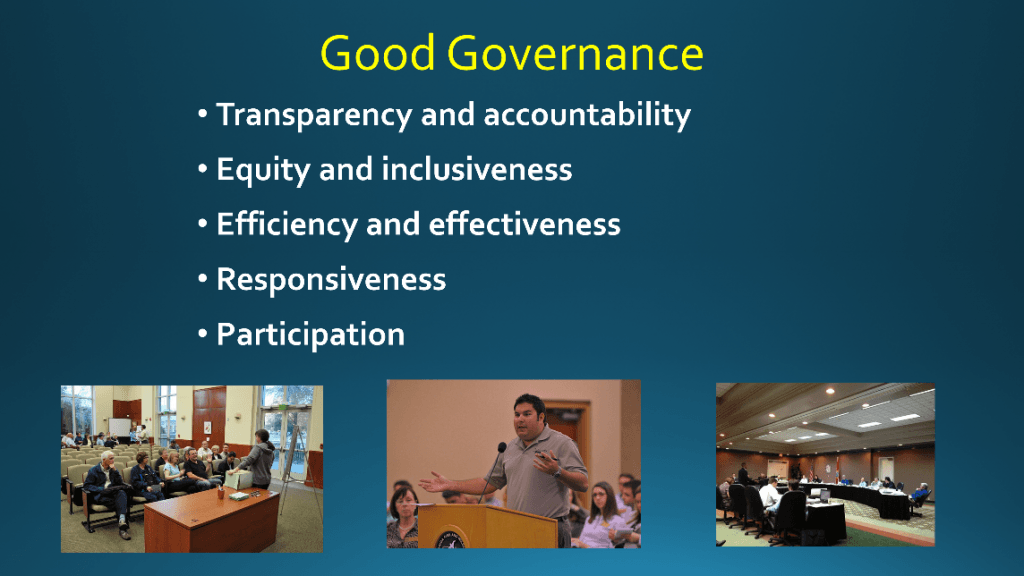 “Good” governance is a more modern development and reflects the expectations of citizens in Western democracies regarding the roles and relationships of government to those governed. Good governance includes practices that provide for transparency and accountability and result in equitable allocation of trust benefits and inclusion of diverse voices in the decision making process. Good governance practices can also help organizations be more efficient and effective and be more responsive to citizens as well as increasing the participation of citizens in the decision process.
“Good” governance is a more modern development and reflects the expectations of citizens in Western democracies regarding the roles and relationships of government to those governed. Good governance includes practices that provide for transparency and accountability and result in equitable allocation of trust benefits and inclusion of diverse voices in the decision making process. Good governance practices can also help organizations be more efficient and effective and be more responsive to citizens as well as increasing the participation of citizens in the decision process.
The tenets of good governance combined with public trust thinking contributed to the creation of the Wildlife Governance Principles. These principles were identified to obtain an inclusive, socially considerate, administratively fair, and sustainable management of wildlife resources.
